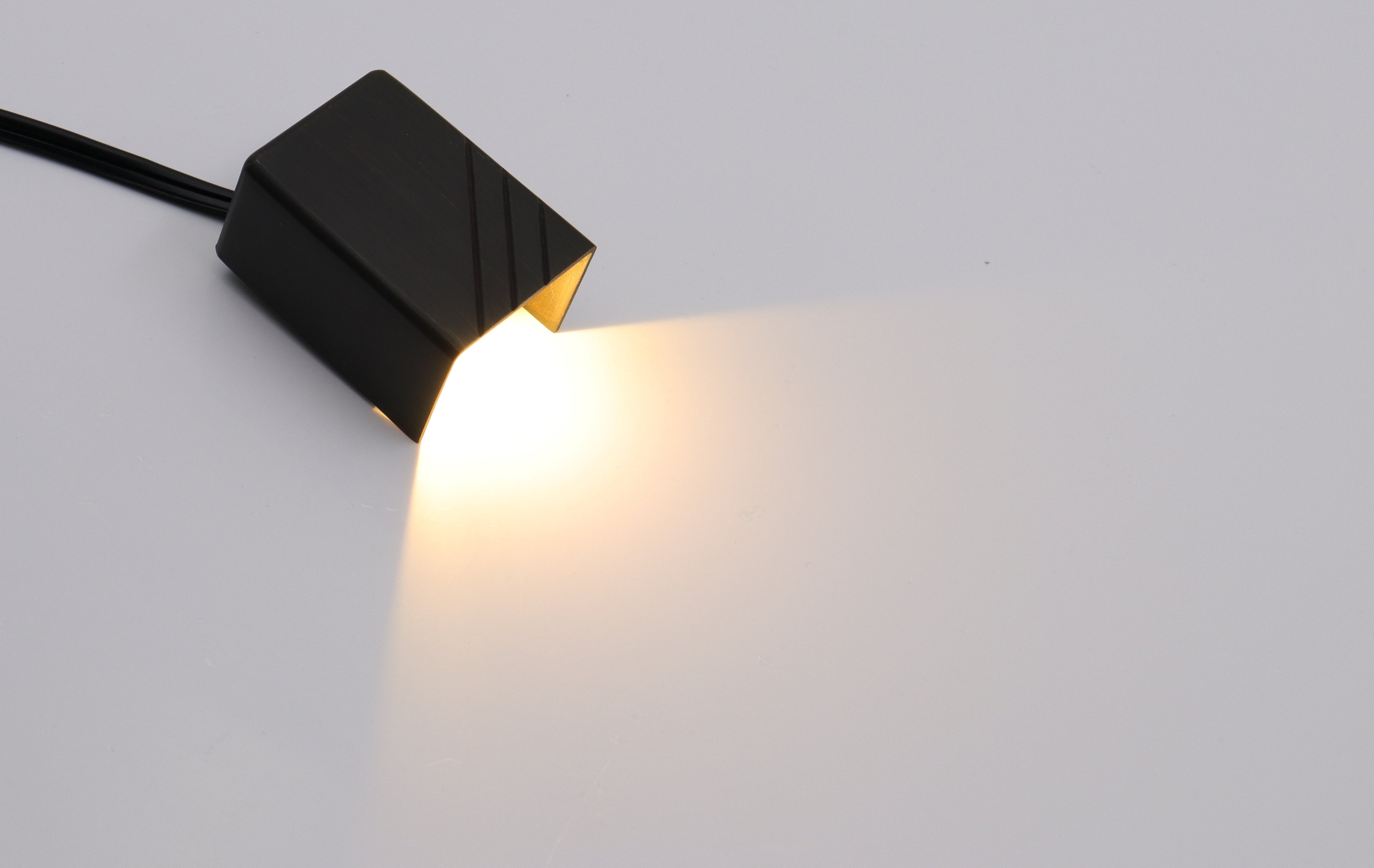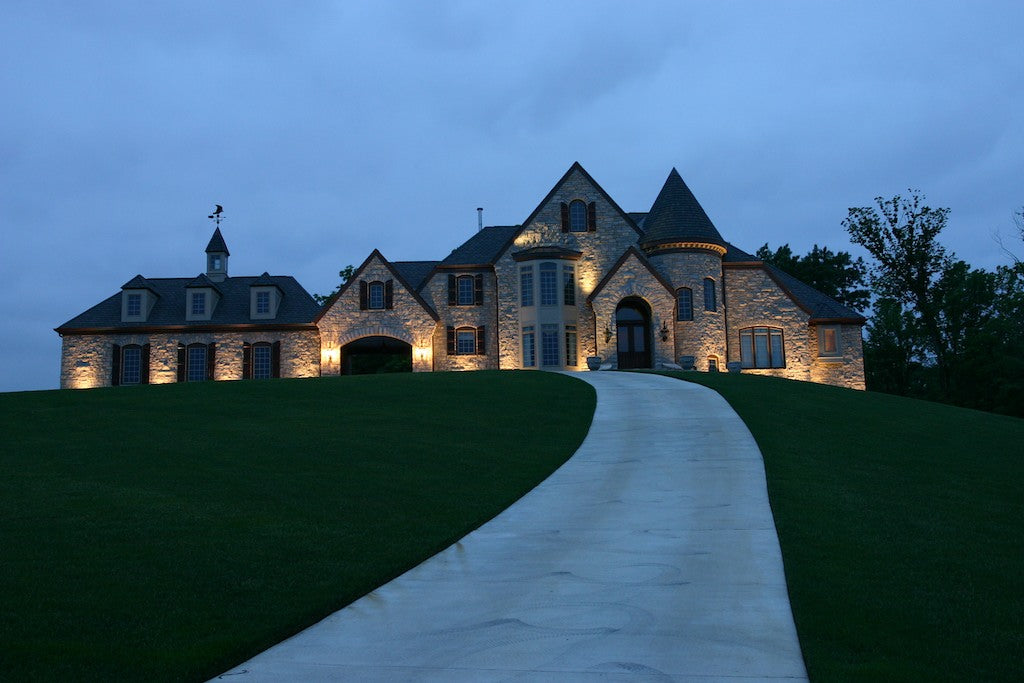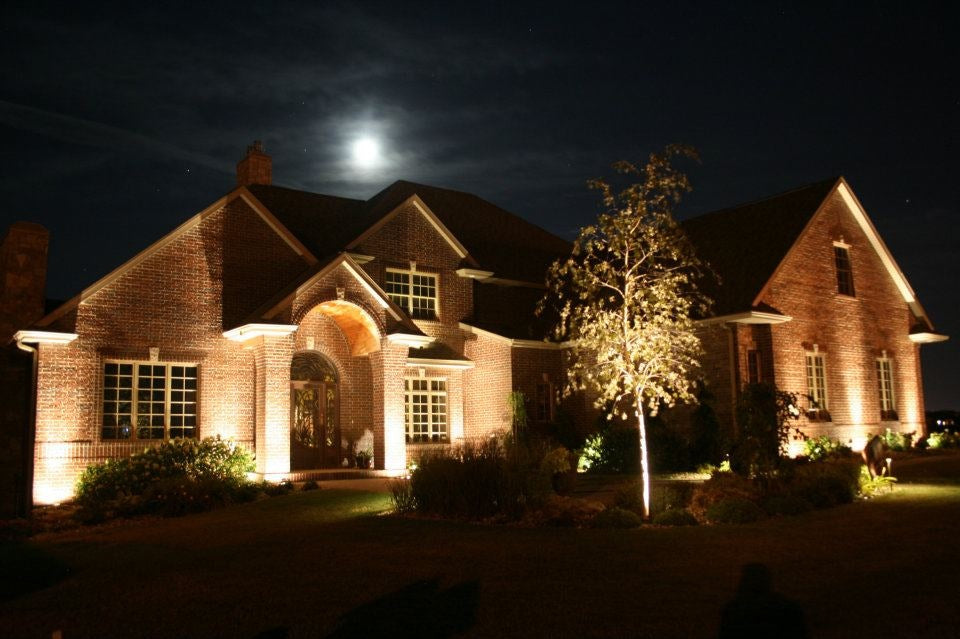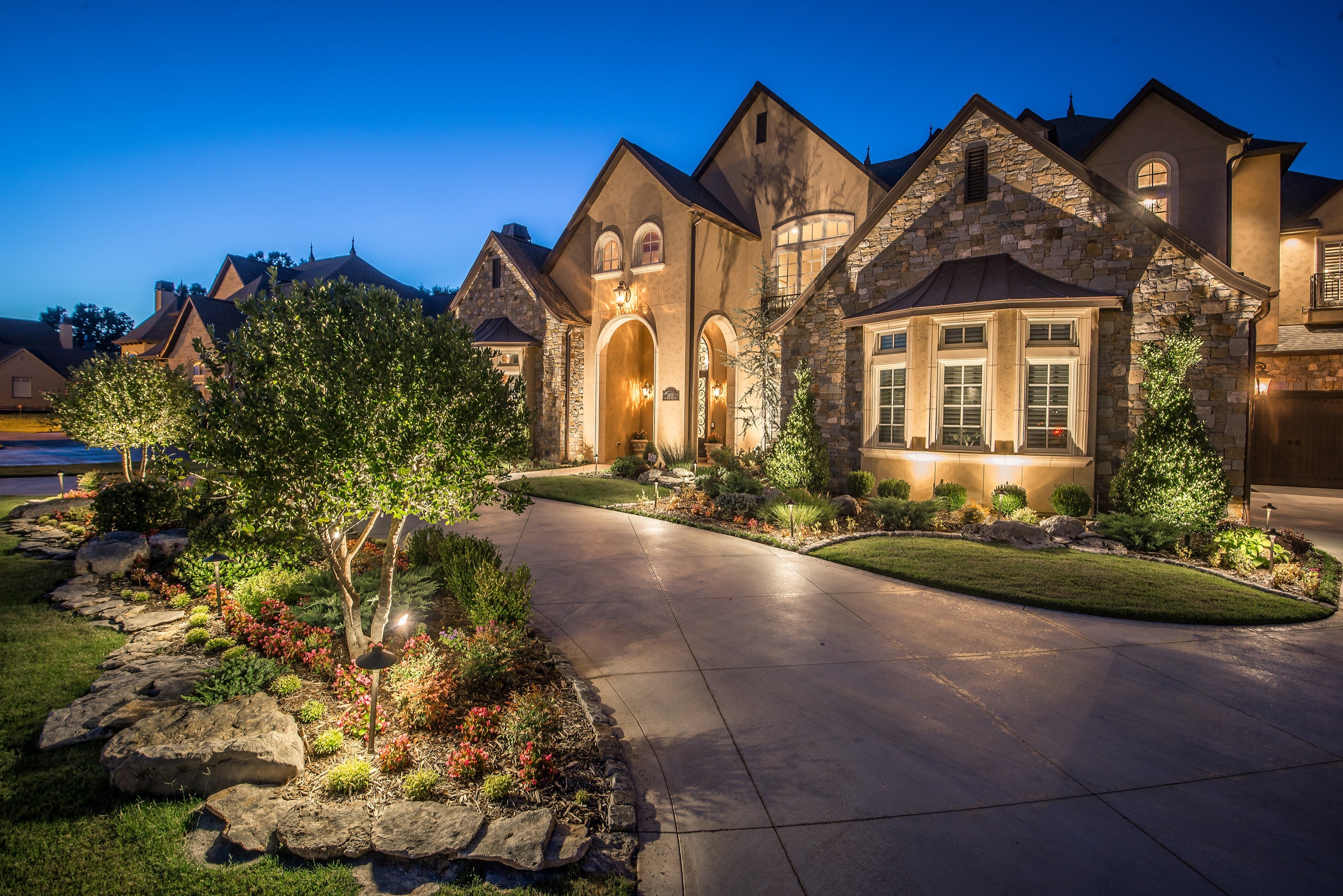Introduction
In a world where first impressions are everything, the facade of your home serves as the introductory chapter of a bestseller. And what's a compelling read without impeccable lighting to set the scene? In 2023, landscape lighting has transcended mere functionality to become an art form—a fusion of technology and aesthetics that makes your yard come alive after sunset. Here are 10 inspired lighting ideas that will illuminate your outdoor spaces in both the front and back of your home.
Moonlighting
Moonlighting is about more than simple aesthetics; it's a sophisticated design technique that requires nuanced consideration. Installing the light fixtures at an elevated height of 20-30 feet ensures that the light is filtered through the natural canopy of leaves and branches, producing an atmospheric, scattered pattern of light on the ground below.
The fixture's downward-facing orientation should also be adjustable to accommodate varying angles of natural moonlight throughout the different seasons. The optimal color temperature of LED bulbs for this effect should be in the range of 4000K to 4500K. For a nuanced touch, consider frosted lenses or diffusers, which add a softened, ephemeral quality akin to moonlight filtering through a light cloud cover.
Periodic maintenance checks are necessary, especially after storms, to ensure that the fixtures and lenses remain free from leaves and debris that could interfere with the lighting effect.
Pathway Illumination
Pathways serve as the arteries of your outdoor space, channeling movement and setting the tone for your outdoor experience. While basic LED or solar-powered path lights in the 50-100 lumen range are functional, integrating advanced options like linear lighting along the pathway margins can add a level of sophistication.
Flush-mounted LEDs, when set directly into the ground, offer an architectural, seamless look that serves both functional and aesthetic purposes. When it comes to spacing, lights should be evenly spread at intervals of 6-8 feet. If your pathway incorporates curves, steps, or changes in elevation, strategically place lights at each pivot point or level change. This not only ensures consistent visual flow but also contributes to safer navigation at night.

Shadow Casting
Shadow casting is less about illumination and more about creating engaging visual experiences. The distance and angle at which your light source is placed greatly influence the shadow's size, sharpness, and texture. If you want larger, softer shadows, position the light further from the object.
Conversely, a closer, more focused light source, like a narrow-beam LED, will create sharper, more distinct shadows. But the technique doesn't stop there. Organic or complex shapes like foliage, garden ornaments, or sculptures often require a more dynamic approach. Rotating or tilting the light source at different angles can produce intricate or layered shadows, transforming your outdoor space into an interactive art installation.
Uplighting
When it comes to uplighting, one size does not fit all. Depending on what you're illuminating—whether it's an architectural feature or natural foliage—different fixtures will serve you best. In-ground fixtures suitable for embedding in soil or gravel should be weather-resistant and have adjustable heads. This allows you to fine-tune the direction and angle of the light post-installation.
Consider varying the beam width based on the subject. A narrow beam can dramatically focus on detailed elements like sculptures or intricate architecture, whereas a wider beam is preferable for general illumination of expansive areas such as trees or walls.
Water Features
Water features create opportunities for enchanting lighting effects, thanks to the unique interplay between light and liquid. Submersible lights with a wide beam angle are excellent for ponds as they illuminate larger areas underwater. For dynamic features like waterfalls or fountains, consider linear LED light strips placed strategically at the edges or base.
The cascade of light interacting with flowing water creates a mesmerizing effect that's further enhanced by reflection and refraction. It's vital to select waterproof or at least water-resistant fixtures for these applications, and if your water feature hosts aquatic life, verify that the lighting setup is safe for the creatures inhabiting it.
Cross Lighting
Cross lighting serves to accentuate intricate details on textured or multi-dimensional objects. To master this, you'll need at least two light fixtures strategically placed at opposing angles relative to the object. The distance between the fixtures and the object, as well as their relative intensity, are crucial factors.
To avoid flattening the object's texture, ensure that one light source is less intense than the other. You can manage this either by using bulbs with varying lumen outputs or by manipulating the distance of one light fixture from the object. It's a technique often used for showcasing garden statues, intricate stonework, or trees with deeply textured bark.
Bistro Lighting
Bistro lighting is synonymous with warmth and comfort, designed to recreate the snug atmosphere of a cozy café. Choose LED bulbs that capture the golden glow of classic incandescent bulbs; a color temperature in the range of 2200K to 2700K is optimal for achieving this aesthetic.
The fixture placement is as important as the bulb selection; they should be spaced at intervals of 2-3 feet and hung 8-10 feet above the ground for optimum illumination and visual appeal. If your outdoor setting includes architectural elements like pergolas, weaving the lights through these structures adds another layer of intimacy and charm.
Color LEDs
Color LEDs are the game-changers in modern lighting design, offering unprecedented control over the mood of a space. Opt for RGB LED fixtures that are app-controlled for effortless customization. These systems often provide a wide spectrum of color choices, ranging from calming blues to energetic reds. Advanced setups may offer synchronization with music or even voice-controlled operation, allowing you to create a dynamic, multi-sensory experience with minimal effort.
Know more about LED, please click on Selecting the Perfect LED Bulbs.

Wall Washing
Wall washing is a nuanced technique aimed at subtly enhancing architectural features and textures. Rather than harshly spotlighting the wall, the goal is to create a uniform distribution of light. This is best achieved with floodlights or wide-angle spotlights placed about 2-3 feet away from the wall surface.
The trick lies in selecting fixtures with a soft, diffused light output, which ensures that the entire wall is evenly lit. This technique works exceptionally well on textured surfaces like brick, stucco, or natural stone, making them pop without overwhelming the viewer.
Sensor-Based Solutions
The next frontier in outdoor lighting is undoubtedly sensor-based solutions, which offer a seamless blend of convenience and security. Motion-activated lighting systems are particularly useful for entryways and secluded corners, illuminating these areas only when necessary. This serves both as a security feature and an energy-saving measure.
Light sensors offer another layer of sophistication by detecting the ambient natural light and adjusting the artificial lighting intensity accordingly. These adaptive systems ensure that you're never using more energy than needed while still keeping your space optimally lit.
Conclusion
Whether it's the enigmatic allure of moonlighting or the practical utility of sensor-based solutions, understanding these various lighting techniques allows you to create an outdoor sanctuary that is as functional as it is beautiful. Each technique offers its own set of advantages and aesthetic appeals, and combining them in a thoughtful manner can elevate your outdoor space to a veritable oasis of light and shadow.
Read More: Paver Lighting Ideas: How to Light Up Your Pavers Stylishly?






Leave a comment
All comments are moderated before being published.
This site is protected by hCaptcha and the hCaptcha Privacy Policy and Terms of Service apply.